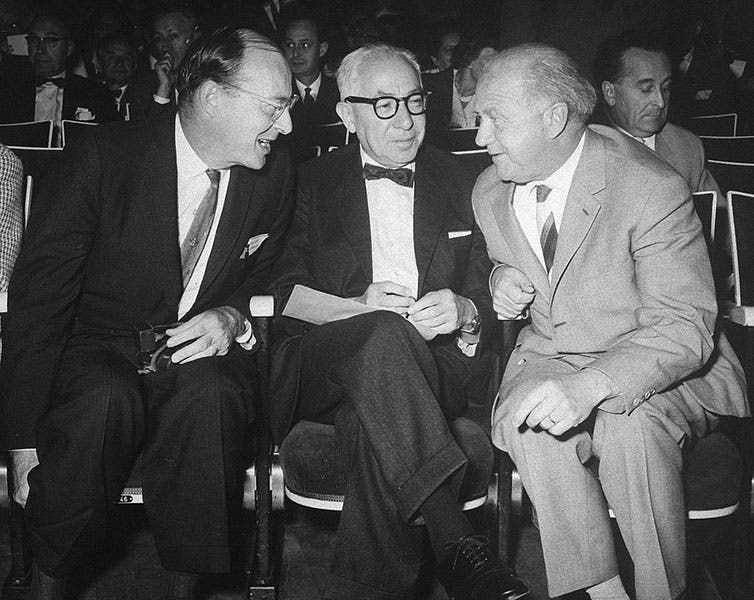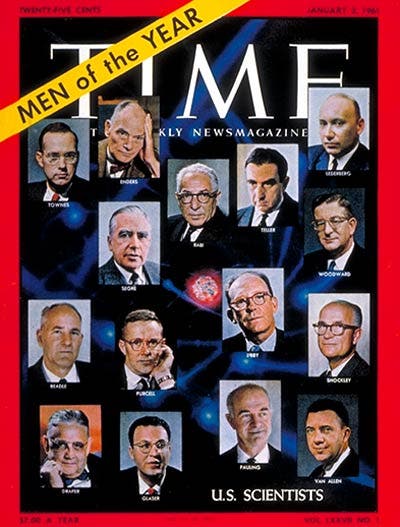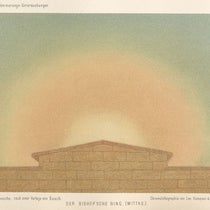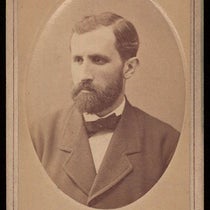Scientist of the Day - Isidor Isaac Rabi
Isidor Isaac Rabi, a Polish-born American physicist, was born July 29, 1898. Coming to the United States as a baby, he survived the streets of Lower-East-Side New York City to make it to Cornell University, where he studied chemistry. He then discovered that a Jewish chemist could not find employment in either academia or industry in the 1920s. After working for a few years as a bookkeeper, he went back to college, this time at Columbia University, and now studying physics. Still without opportunities for employment with his second degree, this one a PhD, he went to Europe in 1926, where the revolution in quantum physics was at full boil. Rabi impressed several German physicists, including Werner Heisenberg at Göttingen and Otto Stern in Hamburg. Stern, with Walther Gerlac, had discovered that molecules in a beam sent through a magnetic field tend to line up in one of two quantum states, something they called magnetic resonance. Rabi had studied nuclear magnetism and had some ideas of his own about how to improve the experiments, and he was invited by Stern to stay over when his fellowship ran out and become an experimental physicist. Since Rabi had no job prospects back in the States, he did so. In 1929, Columbia was looking to add a new faculty member in physics, and the administration asked Heisenberg, who was visiting, whom he would recommend. He suggested Rabi, and Rabi was hired, the first Jew on the faculty at Columbia. He would remain there for the rest of his life.
Rabi worked on magnetic resonance in the 1930s, setting up his own magnetic beam lab at Columbia, attracting lots of students, and developing all the tools necessary to use molecular beams to measure the properties of nuclei, discoveries that would lead to the award of a Nobel Prize in Physics in 1944. Much later, his work gave rise to magnetic resonance imaging, or MRI, which has revolutionized modern medical imaging.
But Rabi's most influential work might have come during the early years of World War II. Great Britain was desperate for some way to detect enemy aircraft and submarines, and they came up with one of the essential ingredients for a portable radar system, a small microwave generator, called the cavity magnetron, but they did not have the resources to develop it. The British sent the magnetron to the U.S. in 1940; it was demonstrated on Oct. 6, and within weeks a special radar division, code-named Radiation Laboratory or Rad Lab, was established at MIT. Rabi was invited on board and was instrumental in the success of the program, so that by the time the United States entered the war in late 1941, warplanes and ships were already being equipped with radar transmitters and receivers. We have written posts on the two men who supervised Rad Lab, Lee DuBridge, the director, who made Rabi his assistant director, and Alfred Loomis, the wealthy patron of the Lab, as well as Taffy Bowen, who built Britain's line of radar defenses and physically brought the cavity magnetron to the U.S. in 1940.
With the end of the war, Rabi became politically active, working, like Robert Oppenheimer, at trying to prevent nuclear proliferation. He lived until 1988, so he had plenty of time and energy to work to achieve a less hazardous planet. He was also an outspoken opponent of President Reagan’s Star Wars program, accusing the administration, in an address in 1986, of lying to the people:
And the question is: Are we living in a society where truth and clarity are an important element of our culture? And I must say that this administration – and I speak as a lifelong Republican – is just morally bad for young people. You have the highest administrative officials telling lies that are not punished. That is a terrible moral situation…
I think we can agree on that.
Dr. William B. Ashworth, Jr., Consultant for the History of Science, Linda Hall Library and Associate Professor emeritus, Department of History, University of Missouri-Kansas City. Comments or corrections are welcome; please direct to ashworthw@umkc.edu.








